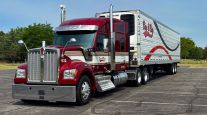Getting the Most From Simulator Training
Provencher stressed the need to monitor performance after training. “For example, drivers might learn to improve fuel efficiency at first, but if you don’t monitor their performance long term, they may slide back to where they were originally,” he said. “Follow-up is key.”
Over the past five years, PIT has tested various training programs to see which was most effective. The organization also sought to gauge how well drivers learned initially and how much knowledge they retained in the long run.
“We’ve looked at training for fuel efficiency and compared simulators, classroom training and in-cab training,” Provencher said. “For safety, there’s no question that simulators are great, but in terms of fuel efficiency, we couldn’t see a significant difference between the three methods.”
PIT’s investigation into fuel-efficiency training found that success hinged mainly on driver motivation. “Our conclusion was that the training method doesn’t matter as much as the motivation of the drivers,” Provencher said. “If the drivers were highly motivated, they improved their fuel efficiency regardless of the method of training. Likewise, if they were not motivated, they didn’t improve, no matter which training method was used.”
Nevertheless, it’s clear that driving simulators have an important role to play in training, Provencher said. “Simulators can be used to re-create the exact conditions of an accident that happened. The driver can learn how to manage the situation and avoid the accident. The simulated event can be repeated until the driver is handling it without crashing,” he said.
Another way to utilize simulator technology is preparing drivers for snow and ice. “When winter is approaching, it’s smart to use the simulators to put all of your drivers in winter conditions,” Provencher said. “It may be September and there’s no snow yet, but the first time you lose control of your truck this winter, it will be on the simulator, so there’s no risk there.”
Even experienced drivers can be caught off guard. “People can forget over the course of the year how careful you have to be with snow and ice, and the first time they encounter slippery roads, they’re not ready,” he said. “If they practice on a simulator a couple of weeks before, they’re not as surprised when it happens for real.”




